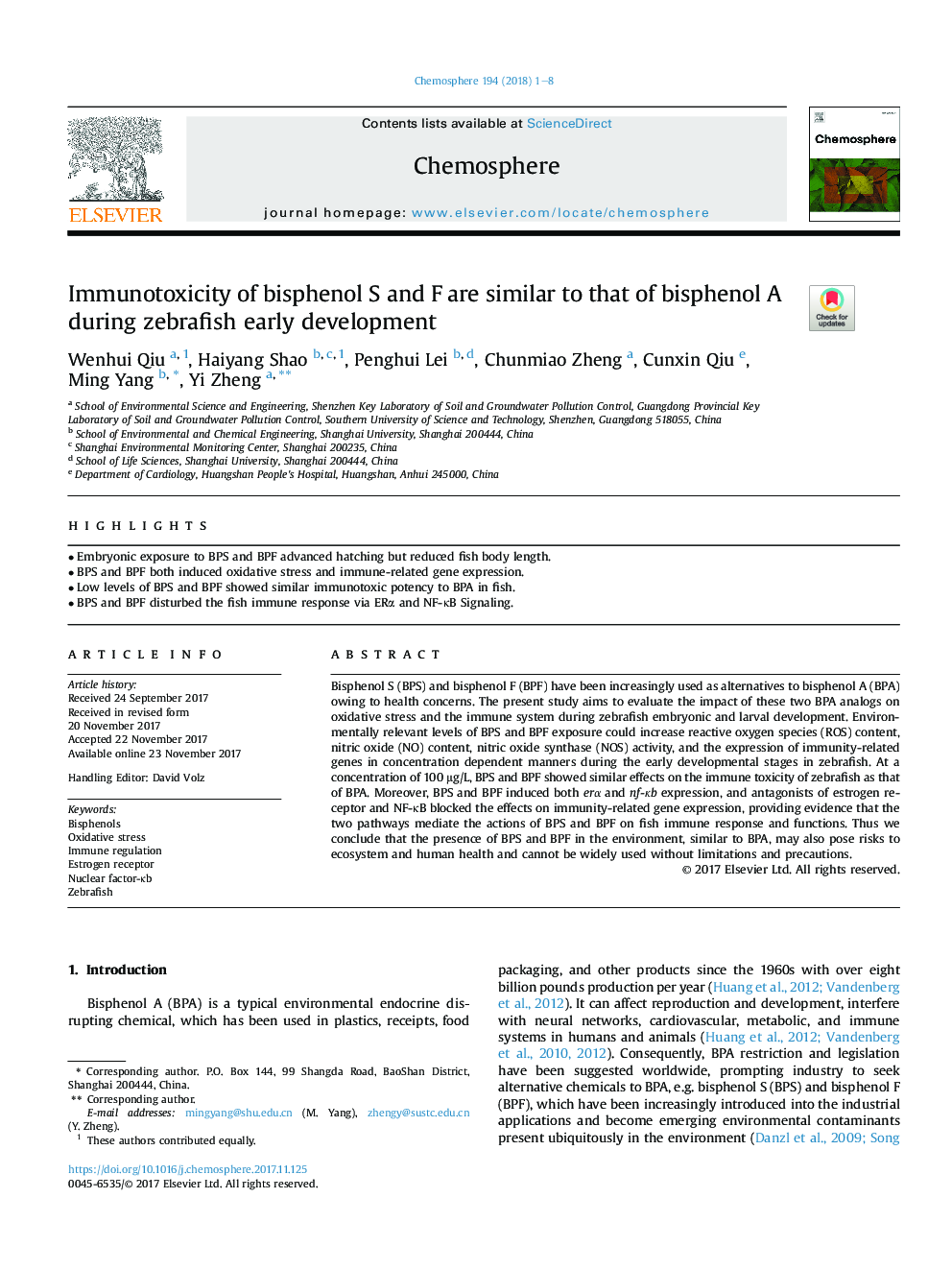| Article ID | Journal | Published Year | Pages | File Type |
|---|---|---|---|---|
| 8852415 | Chemosphere | 2018 | 8 Pages |
Abstract
Bisphenol S (BPS) and bisphenol F (BPF) have been increasingly used as alternatives to bisphenol A (BPA) owing to health concerns. The present study aims to evaluate the impact of these two BPA analogs on oxidative stress and the immune system during zebrafish embryonic and larval development. Environmentally relevant levels of BPS and BPF exposure could increase reactive oxygen species (ROS) content, nitric oxide (NO) content, nitric oxide synthase (NOS) activity, and the expression of immunity-related genes in concentration dependent manners during the early developmental stages in zebrafish. At a concentration of 100 μg/L, BPS and BPF showed similar effects on the immune toxicity of zebrafish as that of BPA. Moreover, BPS and BPF induced both erα and nf-κb expression, and antagonists of estrogen receptor and NF-κB blocked the effects on immunity-related gene expression, providing evidence that the two pathways mediate the actions of BPS and BPF on fish immune response and functions. Thus we conclude that the presence of BPS and BPF in the environment, similar to BPA, may also pose risks to ecosystem and human health and cannot be widely used without limitations and precautions.
Related Topics
Life Sciences
Environmental Science
Environmental Chemistry
Authors
Wenhui Qiu, Haiyang Shao, Penghui Lei, Chunmiao Zheng, Cunxin Qiu, Ming Yang, Yi Zheng,
